Ever since the fall of the Maxis empire, Colossal Order’s Cities: Skylines has captured the heart and minds of wannabe mayors all over the world. The developers have maintained a steady stream of DLC and add-ons for the game. This has helped keep Skylines feeling fresh even three years after its initial launch date.
Additional content has provided reworks to many of the systems within Skylines, including parks and traffic management. Notably absent was a mechanic to take advantage of the natural resources that litter each map. Industries, the newest DLC pack, aims to provide a whole new extract and process these resources. Business magnates, rejoice!
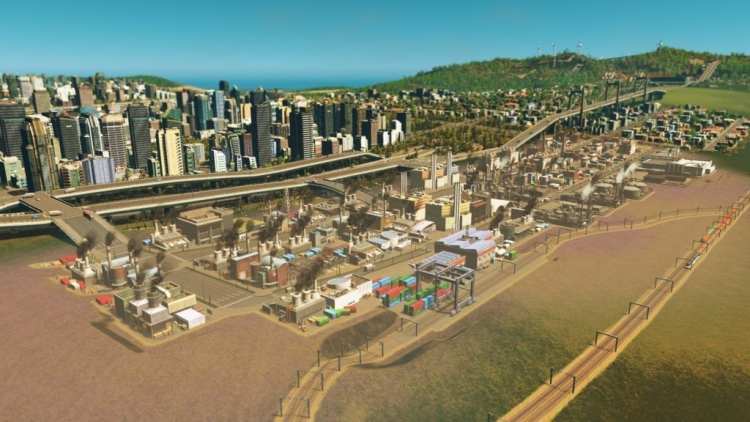
Smells like profit!
The Start Of Your Industrial Empire
Things start off with setting aside land for your industry to thrive in. This is done via the Industrial District tool, which works just like the other district tools already in-game. Simply paint over the area you wish to dedicate to your new Industrial sector and you’re in business. Keep in mind that most of the specialized industrial buildings must be placed inside an Industrial District. Some of these buildings are rather large, so make sure you leave yourself plenty of room. Once you’ve cleared away the necessary space, you’ll place the Main Building required for the specific industry you have in mind.
Main Buildings are the hub of each industrial district and must be constructed before you can get down to business. From the Main Building, you can see a succinct overview of your industrial district. You can use this to see your total resource output, net profit, amount of workers, and a breakdown of the imports and exports within the district.
Also viewable is the overall level of your industrial district. All districts start at level one and increase as your production and worker count increases. This level is unique to each industry and unlocks new buildings with each tier. Higher levels are required to produce more advanced products. For example, you’re not able to produce Plastic from Oil until you achieve level two in the Oil Industry. Higher levels will unlock Unique Factories, which can create even more exotic goods.
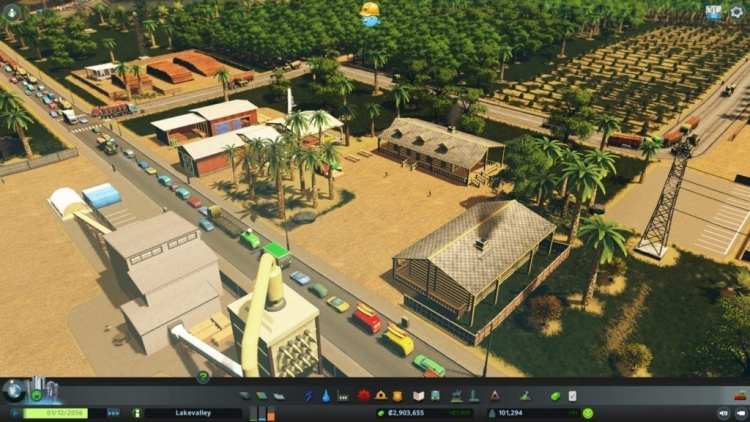
Main Buildings change in appearance as districts level up
Keeping Up With Demand
Most of the magic happens outside of your Main Building. Each district will require a myriad of buildings to keep up constant production. Everything from resource extraction to factory production is under your control. This requires a delicate balancing act. Players need to make sure that they’re extracting enough resources to meet the demands of each refinement facility. If not, the factory will be useless but still charge upkeep, which can get pretty expensive.
As you progress through the levels, you will unlock Unique Factories. These factories combine two or more refined products to produce a Unique Factory Product. For example, the Furniture Factory will require a steady input of both Paper and Planed Timber to stay operational. Some of the higher level factories will combine resources from different industries. While these factories provide plenty of jobs opportunities for your citizens and revenue for your coffers, they are also expensive to build and upkeep.
I’m a huge fan of supply chain management, at least when it comes to video games. This was one of the few aspects the infamous SimCity reboot managed to get right. It took a little while, but Cities: Skylines is finally catching up in that regard thanks to this newest add-on. I’d still like to see more control over imports and exports and a wider impact on the regional economy, though.

Huge processing plants provide a new logistical challenge
Planes, Trains, And Automobiles
A good connection to your flow of industry products is essential for Unique Factories since they require so many varying resources. This can be difficult when one or more of the products is produced clear on the other side of your town. This is where Warehouses come in. Once constructed, a Warehouse can be assigned to keep a constant stock of a specific resource on hand. They achieve this goal using a fleet of freight trucks, so it’s still important to keep your roads traffic jam free.
There are several options to help lighten to load on your road network. Cargo Trains and Ships are always an option but are sometimes hard to route in an already developed city. So, Industries introduces a new alternative: Cargo Airports. Cargo Planes can carry massive amounts of freight all over the city without needing to worry about traffic. The enormous Cargo Airport Hub even comes with a built-in rail connection, in case you want to exploit a previously established rail line.
Overall, these new logistics solutions work great most of the time. Warehouses make it a breeze to make sure resources are in stock and where you need them. I mostly used the Cargo Airport Hub to import or export goods via the included rail connection since my city mainly runs on trains. Most players will inevitably have to work to alleviate some logistical bottlenecks, but that’s most of the fun in Cities: Skylines!
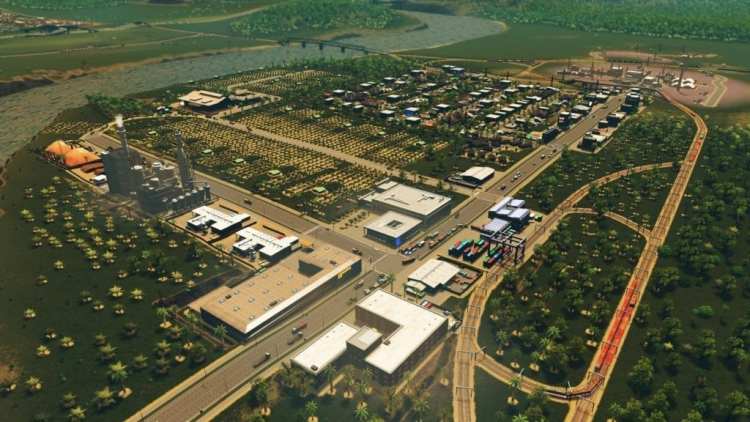
Cargo Trains help take a load off your road network
School’s Out For…Ever?
Most industrial jobs in Cities: Skylines require lower levels of education than Office or Retail developments. I played most of my time in Industries in an already developed city of 100,000 people. My citizens take great pride in their education, so this meant sourcing the citizens for these jobs proved to be more of a challenge than I anticipated at times. In the beginning, I barely had enough demand for Industry jobs to keep more than a couple oil pumps staffed. Even then, the workforce was largely overqualified.
My solution was to create small towns around each of my industrial districts. Previously, I was just setting up the industry with no residential or commercial buildings around. My intent was to have people commute from the city to the Industrial districts. Once I built small communities around these areas instead, everything began to flourish. I intentionally only built elementary schools in these areas and tried to keep land values low in order to attract the, uh… “perfect candidates” for my factories. It was at this point I began to feel more like a dystopian overlord than I’d like. But somebody needed to run my car factory!
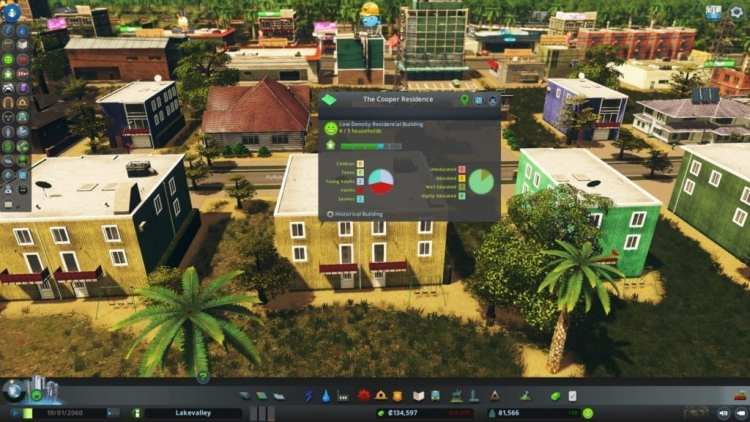
Sorry but I need y’all to get a bit… stupid
Going Postal
New to Cities: Skylines is the addition of a Postal Service. This works just like most of the other city services already in place, like Medical Clinics or Graveyards. All you have to do as mayor is ensure that your city maintains sufficient postal coverage. Obstacles like traffic jams or confusing road systems will bring even the most efficient postal service to its knees. Post Offices are largely set and forget. As long as you don’t forget to keep up with it as you expand, it largely stays out of the way.
Toll Roads have also been included as a free update for everyone. These work just as you’d expect them to based on their real-life analog. Toll Booths can be set up on your road network to generate extra revenue for your city, at the expense of slowing down traffic at each booth. Players can automate their toll booths to return traffic to its normal pace, though this will cut into profits. Personally, however, I didn’t see much use from the toll booths. I generally don’t run into money issues in Cities: Skylines. Smooth traffic flow is also very high on my list of priorities, so there is very little incentive for me to purposefully handicap it.

The Postal Sorting Center lets your citizen’s receive mail from the outside world. It’s mostly spam
A Good Foundation
My gripes with Industries are few and far between. I do wish there was more incentive to build these Industrial districts other than additional revenue. As mentioned earlier, my cities are generally floating several million dollars, so a new source of income isn’t very high on my list of priorities. This is a minor gripe though. Some players might like creating massive industrial complexes, and Industries will absolutely provide for them.
Additionally, High Tech Industry a la SimCity has been on my Cities: Skylines wishlist since launch. In my opinion, the dead trees and purple goop of pollution in-game really spoil the appearance of your city. There is some high-tech industry in the game already, but it still produces plenty of pollution. I was hoping Industries would finally bring us cleaner alternatives and the ability to create dedicated high-tech districts. Alas, it has not. I guess I’ll keep my “No More Purple Pollution” mod installed for a while longer.
However, returning players can expect to easily fall right back into the never-ending loop of trying to fix everything in your city. Several times, I found myself tearing up my highway system and developed neighborhoods so I could reach a new patch of precious Ore or Oil. There’s always something that needs improving, and this is where Cities: Skylines has always shined for me personally. Industries provided enough new content for me to sink a good ten hours of playtime into an old city, and I’m expecting to put in at least ten more by the time this review is up.

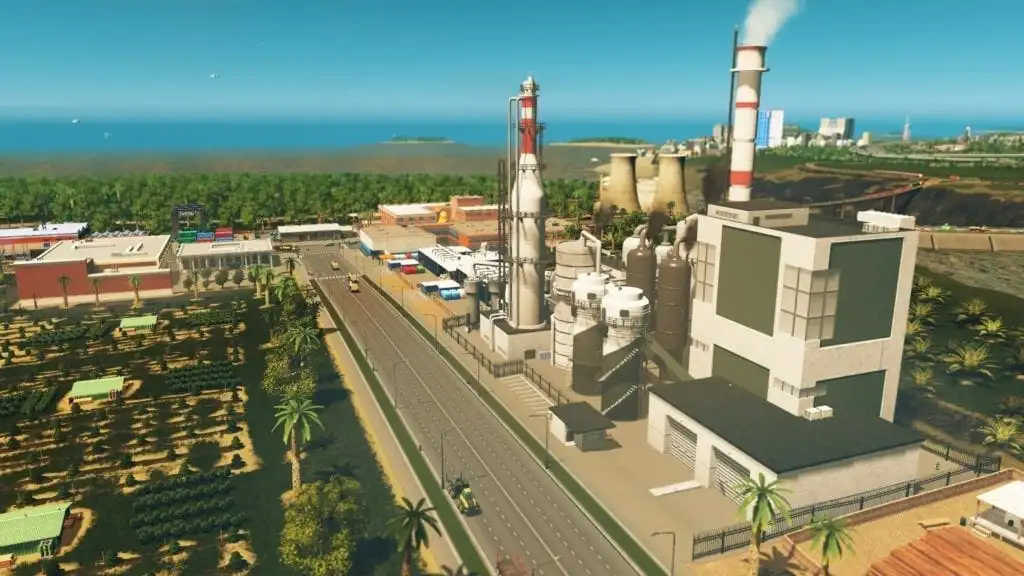





Published: Oct 24, 2018 11:00 PM UTC